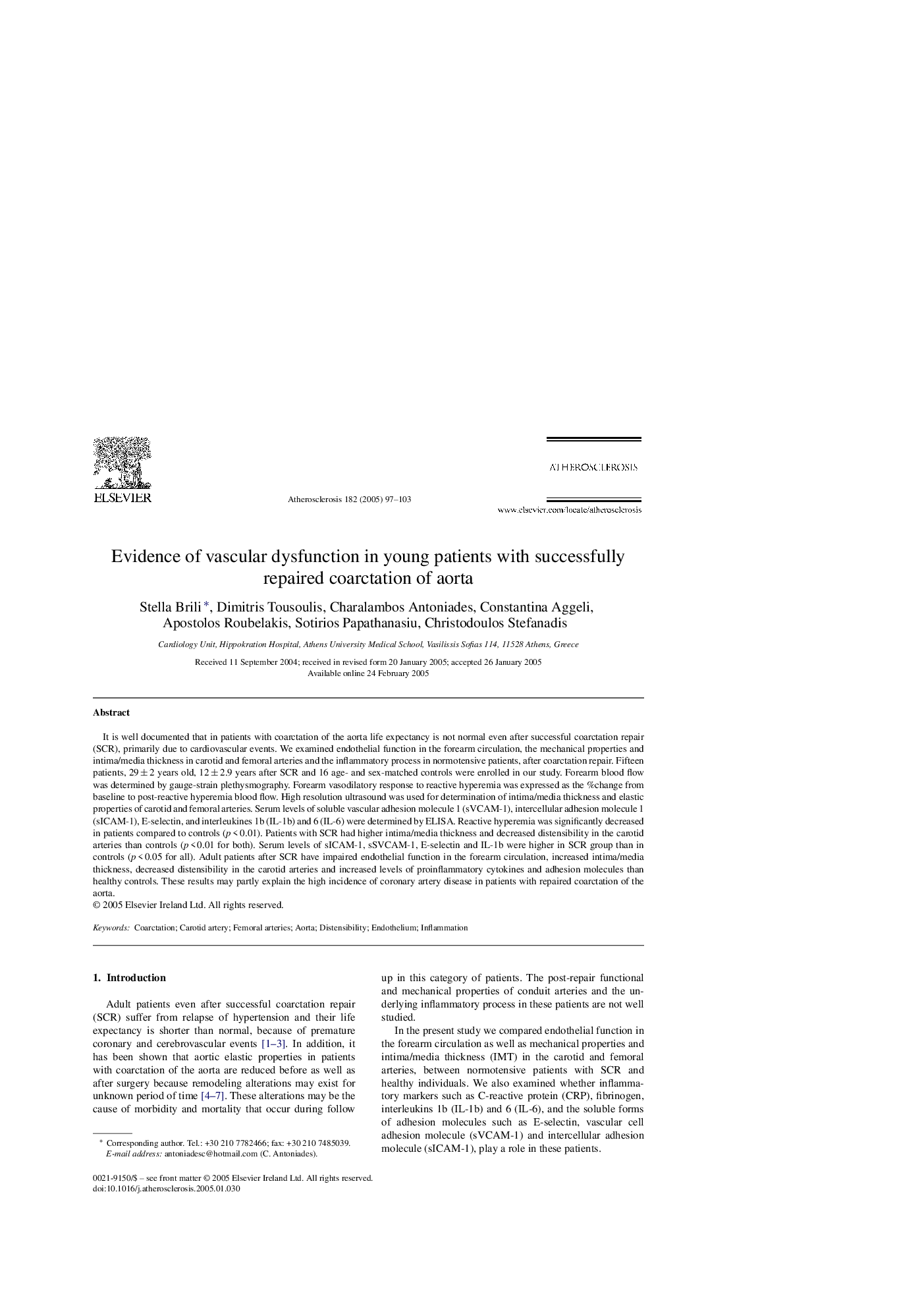| Article ID | Journal | Published Year | Pages | File Type |
|---|---|---|---|---|
| 9157659 | Atherosclerosis | 2005 | 7 Pages |
Abstract
It is well documented that in patients with coarctation of the aorta life expectancy is not normal even after successful coarctation repair (SCR), primarily due to cardiovascular events. We examined endothelial function in the forearm circulation, the mechanical properties and intima/media thickness in carotid and femoral arteries and the inflammatory process in normotensive patients, after coarctation repair. Fifteen patients, 29 ± 2 years old, 12 ± 2.9 years after SCR and 16 age- and sex-matched controls were enrolled in our study. Forearm blood flow was determined by gauge-strain plethysmography. Forearm vasodilatory response to reactive hyperemia was expressed as the %change from baseline to post-reactive hyperemia blood flow. High resolution ultrasound was used for determination of intima/media thickness and elastic properties of carotid and femoral arteries. Serum levels of soluble vascular adhesion molecule 1 (sVCAM-1), intercellular adhesion molecule 1 (sICAM-1), E-selectin, and interleukines 1b (IL-1b) and 6 (IL-6) were determined by ELISA. Reactive hyperemia was significantly decreased in patients compared to controls (p < 0.01). Patients with SCR had higher intima/media thickness and decreased distensibility in the carotid arteries than controls (p < 0.01 for both). Serum levels of sICAM-1, sSVCAM-1, E-selectin and IL-1b were higher in SCR group than in controls (p < 0.05 for all). Adult patients after SCR have impaired endothelial function in the forearm circulation, increased intima/media thickness, decreased distensibility in the carotid arteries and increased levels of proinflammatory cytokines and adhesion molecules than healthy controls. These results may partly explain the high incidence of coronary artery disease in patients with repaired coarctation of the aorta.
Related Topics
Health Sciences
Medicine and Dentistry
Cardiology and Cardiovascular Medicine
Authors
Stella Brili, Dimitris Tousoulis, Charalambos Antoniades, Constantina Aggeli, Apostolos Roubelakis, Sotirios Papathanasiu, Christodoulos Stefanadis,
